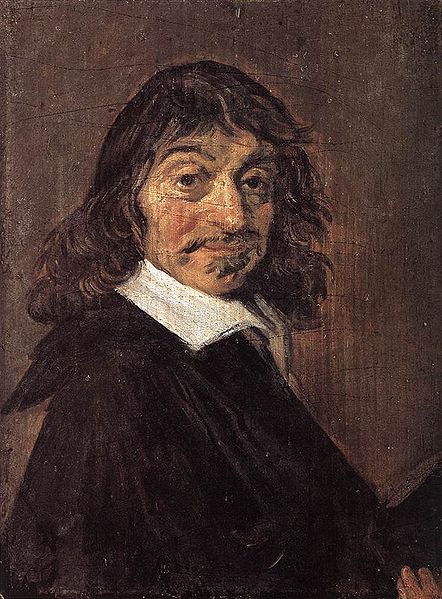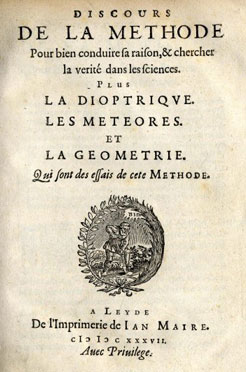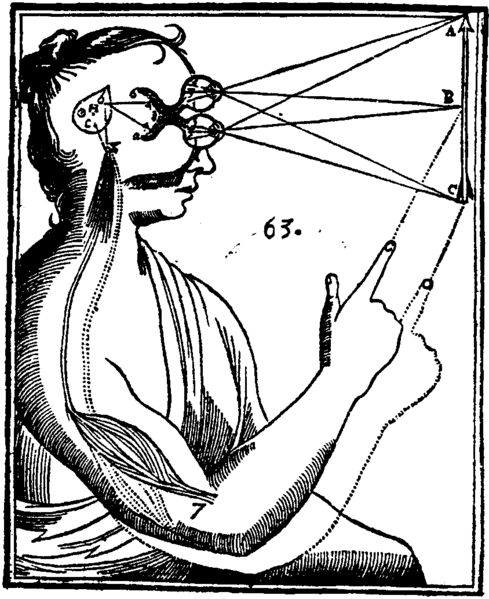Descartes the Scientist
by Andrew Boyd
Today, an extended postscript. The University of Houston's College of Engineering presents this series about the machines that make our civilization run, and the peoplewhose ingenuity created them.
Cogito ergo sum. I think, therefore I am. It's the most famous phrase, and logical argument, emanating from the fertile mind of René Descartes. When we think of Descartes, we think of Descartes the philosopher, and with good reason. His work Meditations on First Philosophy is an early masterpiece of metaphysics. Descartes plunges himself into a world of methodic doubt. "How do I know that everything I perceive isn't merely the deception of an all-powerful, evil demon?" he asks. Does the mind rely on the brain, or do they exist independently?

But Descartes was more than a philosopher. He was a man of logic in all matters, and his writings heavily influenced the scientific revolution.  Descartes' first published work, Discourse on the Method, lays out a framework for "rightly conducting one's reason and [of] seeking truth in the sciences." It's not a description of the scientific method — of hypotheses and experimentation. Instead, it's a practical philosophy about how to seek truth. Descartes then uses his approach to arrive at a proof of God's existence. It's here that we first encounter cogito ergo sum.
Descartes' first published work, Discourse on the Method, lays out a framework for "rightly conducting one's reason and [of] seeking truth in the sciences." It's not a description of the scientific method — of hypotheses and experimentation. Instead, it's a practical philosophy about how to seek truth. Descartes then uses his approach to arrive at a proof of God's existence. It's here that we first encounter cogito ergo sum.
But the first publication of the Discourse also included three appendices. Each was longer than the Discourse itself, and each reads more like a scientific journal paper than an appendix. They're included with the main text to demonstrate the application of Descartes' "method" to scientific problems.
Two of the appendices, Optics and Meteorology, are purely scientific. The third, Geometry, is mathematical. All three are of interest in their own right. For example, in Optics, Descartes works out his laws of refraction. One of the laws is now standard knowledge for all students of optics. In Geometry, Descartes takes early steps toward connecting algebra and geometry. The work led to a fundamental leap in mathematics — the development of analytic geometry. Middle school students get their first taste of it when they graph points, lines, and curves on graph paper labeled with x and y axes — also known as Cartesian coordinates.

The Discourse and its three appendices demonstrate a clear break from the predominant Aristotelianism, whereby scientists simply accepted the centuries-old decrees of Aristotle. Descartes and his contemporaries dismantled a way of thinking that stood in the way of humankind's intellectual advancement. He was a voice of finest reason; a man whose example helped illuminate the way for the many philosophers, and scientists, who followed.
I'm Andy Boyd at the University of Houston, where we're interested in the way inventive minds work.
Notes and references:
The law of optics referenced in the essay is most commonly known as Snell's law. According to the Earth Science Educational Research Center at Stony Brook University, both Snell and Descartes discovered the law independently, but the articulation of the law we use today is due to Descartes. There remains some question as to whether Descartes had seen Snell's manuscript prior to completing his work. However, Descartes' contribution is becoming increasingly recognized, and in some circles the result is known as the Snell-Descartes law.
R. Descartes. Discourse on the Method of Rightly Conducting the Reason and Seeking Truth in the Sciences. English translation taken from the Web site of Project Gutenberg: http://www.gutenberg.org/files/59/59-h/59-h.htm. Accessed November 1, 2010.
R. Descartes. Discourse on the Method, Optics, Geometry, and Meteorology. Second edition. Translated and edited by P. J. Olscamp. Indianapolis, Indiana: Hackett Publishing, 2001.
Descartes' Life and Works. From the Web site of the Stanford Encyclopedia of Philosophy.
All pictures are from Wikimedia Commons.